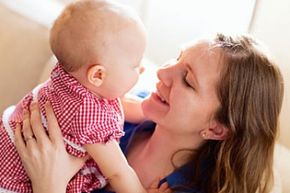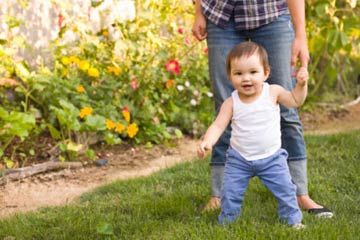Babies are born programmed to learn language, and are actually quite adept at it. Their built-in language ability follows a universal timetable, one that transcends ethnicity and socioeconomic class. Here's an overview of what to listen for and when in your child's language development:
Birth to 24 Months
2 months: Cooing; making long vowel sounds like "oo," "aa," and "ee"
Advertisement
6 months: Babbling using consonants
7 1/2 months: Recognizing familiar words or names
10 months: Pointing, grunting, and gazing to get her demands met; using her own invented words
12 months: Saying his first real words, such as Mama and Dada, a sibling's name, body parts, animal names, or noises like "woof, woof"
14 months: Identifying objects; following simple one-step commands like "Get the ball."
18 months: Saying 50 words; using verbs; asking "What's that?" to get name recognition
24 months: Speaking in two-word sentences, such as "Drink milk" or "Play ball"; using the words "no" and "mine" frequently
Advertisement



